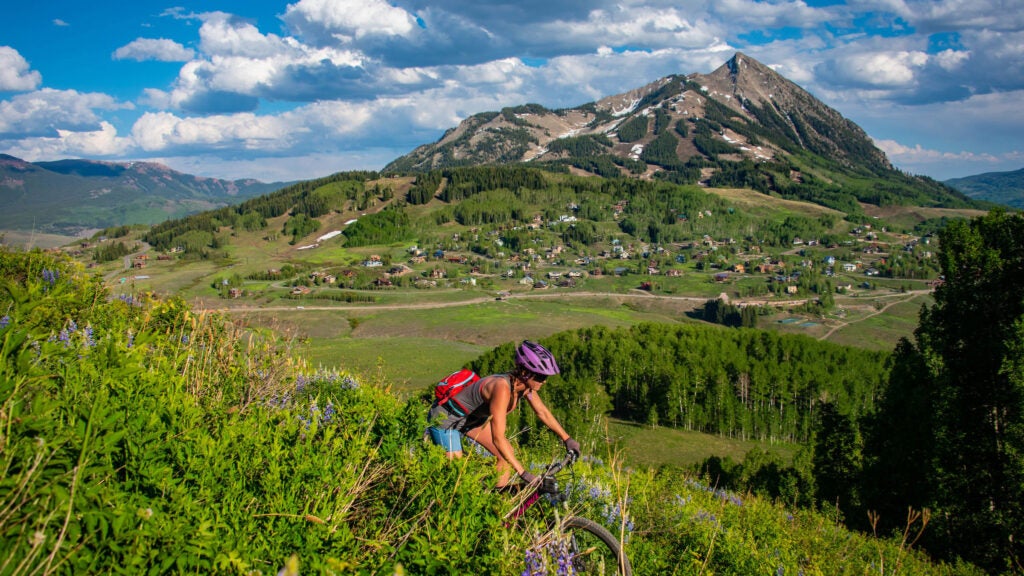No products in the cart.
Outdoor Adventure
The 10 Best Bike Towns in the U.S., Ranked
The U.S. was built for cars. I’m talking about our infrastructure: the interstate system, traffic laws, speed limits, and streets. They’re all designed with vehicles in mind. And yet, some communities have embraced and are moving toward the bicycle over the car.
These towns have done so much: created bike-lane infrastructure and robust greenway systems, leveraged their natural attributes by building singletrack, and put in signage and lower speed limits to make country roads safer. Bike towns vary wildly, some filled with people who pedal to work and shuttle toddlers around via cargo bikes, others good for those who exist solely to shred dirt trails or ascend mountain roads.

To create this list of the Best Small Bike Towns in America, I studied data collected each year by People for Bikes, a non-profit that ranks the “Best Places to Bike” based on factors like local speed limits and cycling infrastructure, giving each community a score from 0 to 100. The average city in the U.S. scores in the mid-20s, while the most bike-friendly places rate in the 70s to low 90s.
I doubled down on data by bringing in info from the League of American Bicyclists, a non-profit that promotes cycling through education and advocacy, and rates communities with Platinum, Gold, Silver, and Bronze status dependent on a town’s numbers of bike lanes and lane connectivity.
Safe streets and being able to commute to school and work are important, but other factors determine a great bike town, like the number of dirt trails and mountains nearby to ascend. So I also sought data from Trailforks, which catalogs the number of mountain-bike trails within feasible reach of each community, and looked for towns that also have access both to world-class road-cycling routes and lonely gravel roads to explore. (Trailforks is owned by Outside Inc., the same company that owns Outside.)
I wanted to focus on small towns across the U.S., so I capped populations at 100,000, which left out some big hitters like Boulder, Colorado, and Minneapolis, Minnesota, both outstanding places to live if you want to bike. My compliments to those communities—please keep up the good work.
While I used as many data points as I could find, this list also contains some subjectivity based on my own experience. For example, Park City, Utah, is in here even though it receives a middling score from People for Bikes. Why? The mountain biking is amazing and there’s so much of it. I also included towns that go above and beyond for commuters, others that have vibrant social cycling scenes (like group rides and events), and others with epic road routes.
Of course, some cities do it all, and I put them at the top of the list. Here are the 10 Best Small Bike Towns in America, ranked.
1. Crested Butte, Colorado
Population: 1,654
People for Bikes Score: 87
League of American Bicyclists: Gold

Why I Chose It: This small Colorado ski town could have earned a spot on this list solely based on its assessments in People for Bikes and the League of American Bicyclists for its bike infrastructure and safe streets. But Crested Butte rose to the top of the pack because it’s also a fantastic mountain-bike mecca, with a lift-served downhill park on the edge of town and access to more than 750 miles of trails within the greater Gunnison Valley.
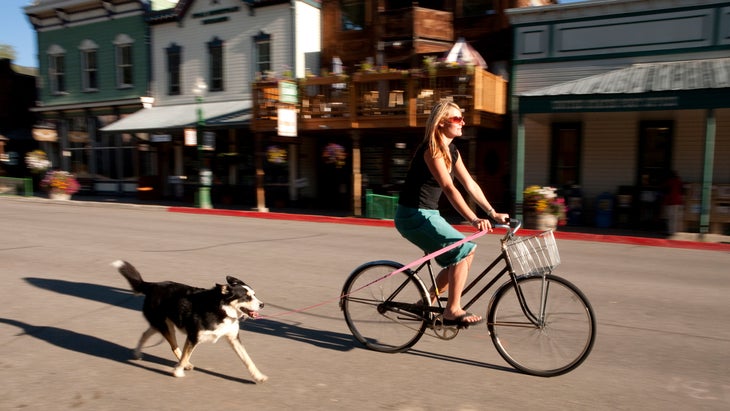
Oh, and it’s an underrated road-cycling destination, with mixed gravel and paved rides beginning in town and climbing to scenic lookouts like Ohio Pass and Kebler Pass, where the Elk Mountains rise ahead in a mix of craggy peaks and aspen-clad slopes.
Number of Bike Trails: 247
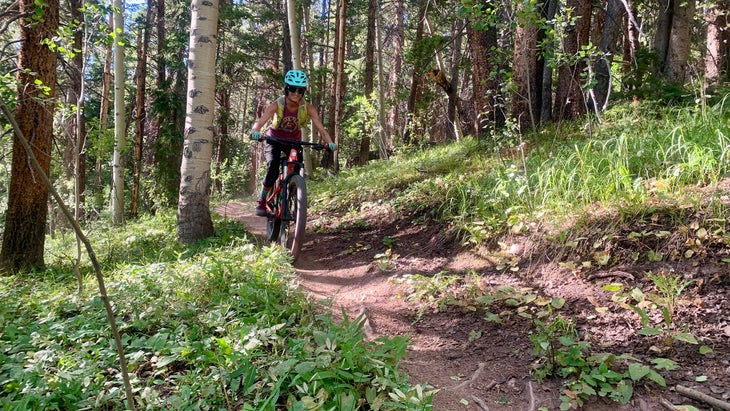
Most Popular Bike Trail on Trailforks: Trail 401 tops the lists. This eight-mile, mostly downhill high-alpine trail begins at Schofield Pass and drops more than 1,000 feet, passing through wildflower meadows with views of the Gothic Valley and Mount Crested Butte.
2. Davis, California
Population: 68,000
People for Bikes Score: 77, highest ranked medium-sized city in its report
League of American Bicyclists Status: Platinum
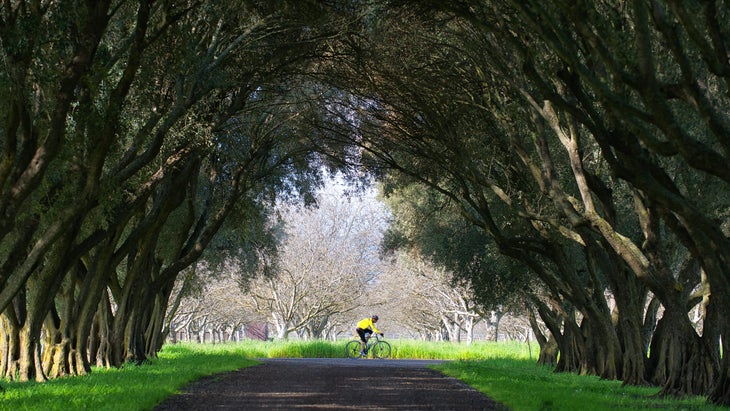
Why I Chose It: Davis, a college town on the outskirts of Sacramento, is a bike commuter’s dream. It was the first city in the U.S. to implement dedicated bike lanes, back in 1967, and has only improved its bike infrastructure since. Currently, more than 95 percent of the city’s streets have bike lanes, giving locals 102 miles of those and 63 miles of off-street paths to pedal. Many intersections have bike-specific signals, and there are even bike boulevards, meaning streets shut down to motorized vehicles. Davis has been repeatedly touted as the most bike-friendly city in the U.S. by organizations like People for Bikes, and the League of American Bicyclists estimates that 22 percent of residents commute regularly by bike.
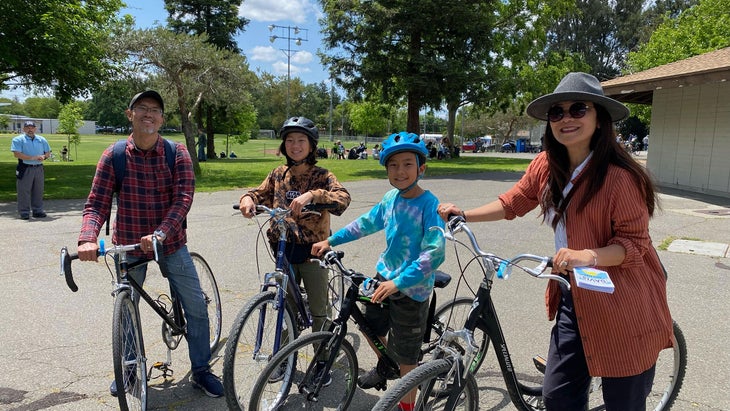
Number of Bike Trails: 7. Davis proper isn’t much of a mountain-bike community–most of the in-town trails are short paths cutting through neighborhoods and parks. But there are good trail systems within the greater Sacramento Valley, known for its patchwork of vegetable and fruit farms, including the 20 miles of trail at Rockville Hills Regional Park 30 minutes south.
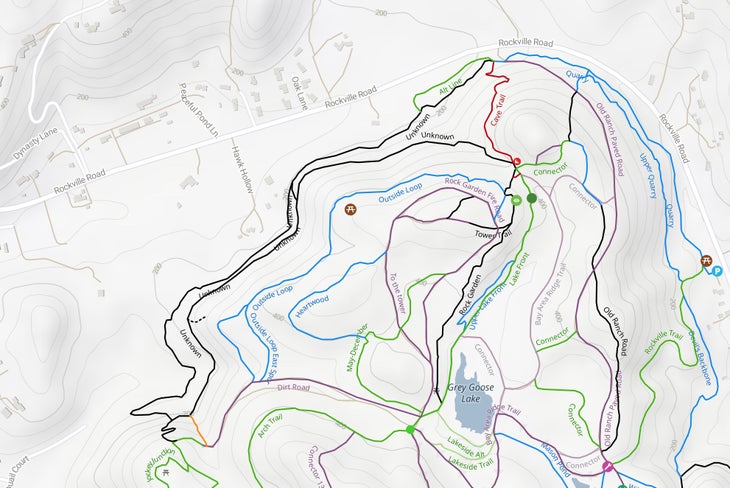
Most Popular Bike Trail on Trailforks: Rockville Trail, in Rockville Hills, connects you from the trailhead parking lot to the gems within the stacked-loop system, including Lake Front, which has a fun, easy downhill before skirting Grey Goose Lake.
3. Jackson, Wyoming
Population: 10,698
People for Bikes Score: 79
League of American Bicyclists Status: Gold
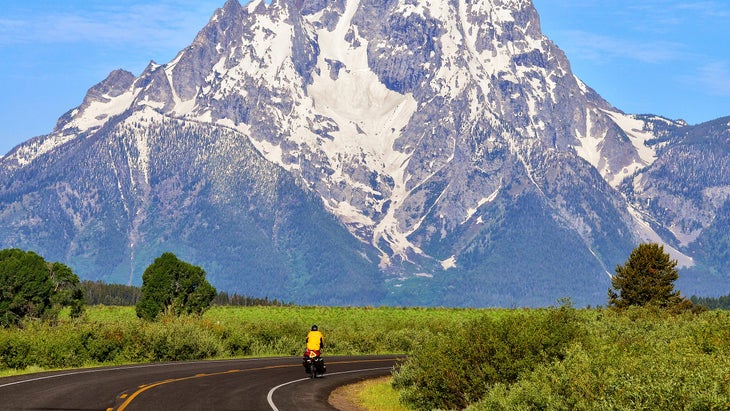
Why I Chose It: Jackson Hole made this list for its bike-lane connectivity. More than 100 miles of paved trails run through and beyond town, with 115 miles of singletrack surrounding it—and that’s just within the valley known as Jackson Hole. Not only can you bike to the grocery store on a designated route, you can pedal into the National Wildlife Refuge and Grand Teton National Park on a paved trail (it’s 20 miles from Jackson to Jenny Lake inside the park), with views of the jagged Teton Range and herds of elk.
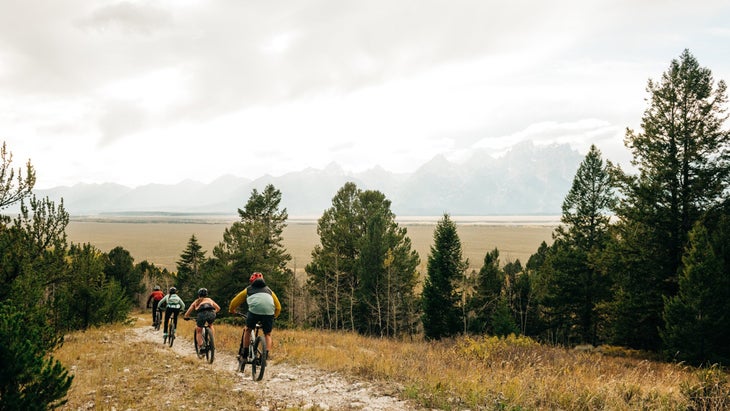
Trailheads for popular singletrack begin right on the edge of neighborhood streets, and Jackson Hole Mountain Resort’s extensive lift-served routes are 15 minutes from the town center. Biking is woven into the fabric of the community, through the extensive infrastructure and events like bike swaps, youth programs, and local race series. In June, a landslide closed a 10-mile stretch of the Teton Pass mountain road for three weeks, impeding the commute between Jackson and less expensive communities in Idaho. The silver lining? Cyclists enjoyed a car-free pedal to the top of the pass. Teton Pass is open now, and classic rides like Parallel Trail, a 1.5-mile downhill with lots of jumps, are once again easy to access.
Number of Bike Trails: 105
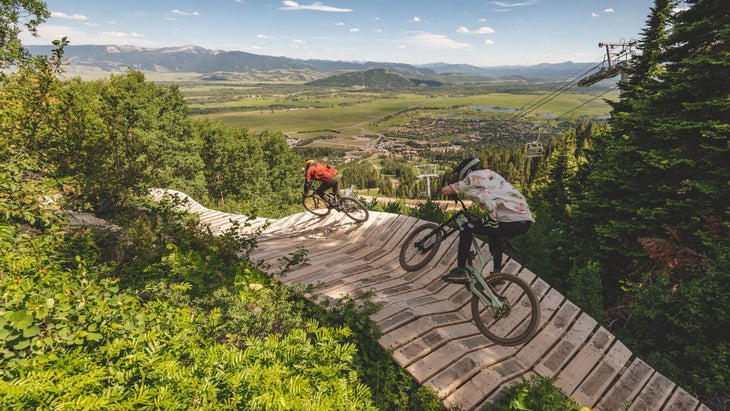
Most Popular Bike Trail on Trailforks: Putt Putt takes top honors. This beginner-friendly three-mile cross-country trail begins at the Cache Creek Trailhead and has a number of connectors that allow you to form fast, rolling loops with other trails in the same system, like Hagen, for nearby post-work romps.
4. Aspen, Colorado
Population: 6,741
People for Bikes Score: 75
League of American Bicyclists Status: Gold
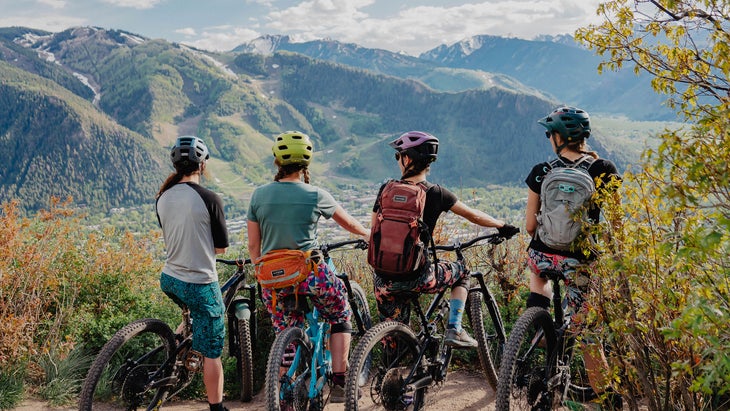
Why I Chose It: Aspen checks all the boxes, scoring high marks from People for Bikes and the League of American Bicyclists thanks to its infrastructure and low-speed streets. The city of Aspen manages more than 22 miles of paved bike trails connecting parks within the town’s limits, and the Rio Grande Trail offers 42 miles of no-traffic asphalt from Aspen to Glenwood Springs.
Aspen also has a bike-share program in the form of We-Cycle, which has stations throughout the Roaring Fork Valley and offers 30-minute free rides in town.
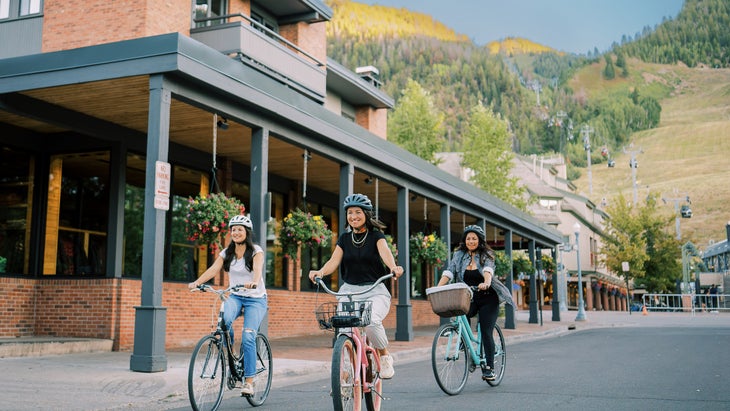
Aspen-Snowmass and the Roaring Fork Valley was the first destination in Colorado to earn Gold Level Ride Center status from the International Mountain Bike Association (IMBA). The Roaring Fork Valley has more than 300 miles of trails, from lift-served descents at Snowmass Mountain Resort to hut-to-hut bikepacking through some of the 10th Mountain Division’s cabin system. And then you have the road routes, like the bucket-list-worthy 16-mile roundtrip from downtown to Maroon Bells, where the twin 14,000-foot Maroon Peak and North Maroon Peak rise above the placid Maroon Lake.

Number of Bike Trails: 191
Most Popular Bike Trail: The crown goes to French Press, a 4.4-mile downhill romp in Snowmass’ Bike Park that is full of berms and rollers from top to bottom. Both beginners and pros love it as being fun regardless of how fast you tackle it.
5. Ashland, Oregon
Population: 21,285
People for Bikes Score: 70
League of American Bicyclists Status: Gold
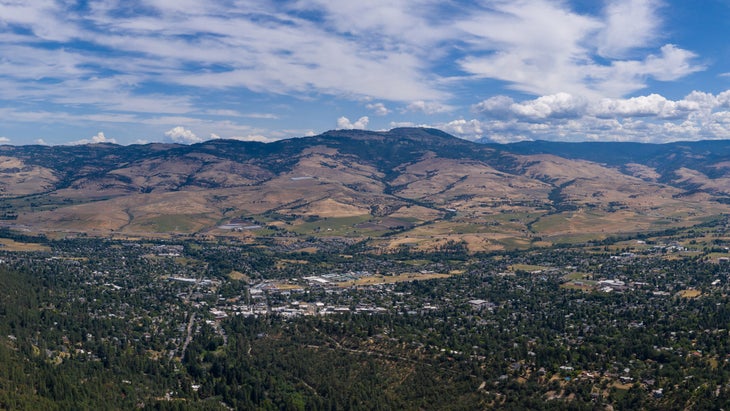
Why I Chose It: Ashland is celebrated for its annual Shakespeare Festival, but this southern Oregon town deserves to be just as famous for its biking. The only question is which riders have it better here, the roadies or the mountain bikers? Road cyclists have the 55-mile Cascade Siskiyou Scenic Bikeway, which begins and ends downtown and climbs 5,000 feet out of Bear Valley, with views of iconic landmarks like the volcanic Pilot Rock and the 9,000-foot tall Mount McLoughlin.
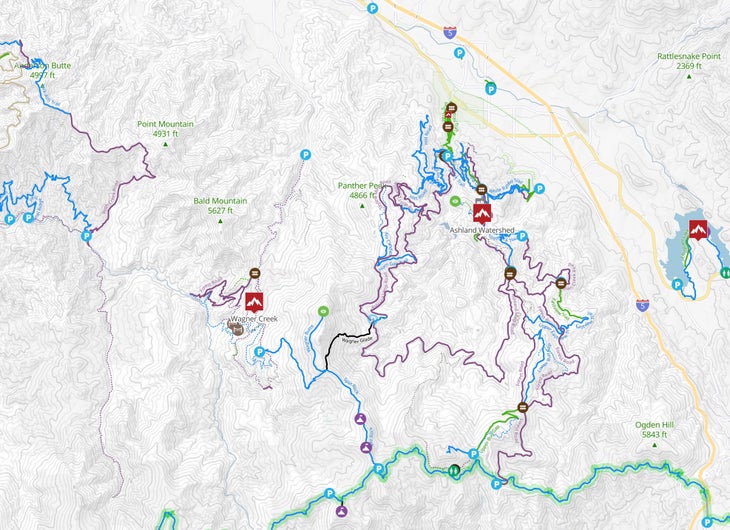
Hundreds of miles of rural paved roads extend into the surrounding Siskiyou Range. Mountain bikers enjoy the 100-mile trail system in the 15,000-acre Ashland Watershed, where singletrack ascends to the top of 7,532-foot Mount Ashland and runs all the way back into town, more than 5,000 feet below. Ashland Mountain Adventures runs shuttles ($30 per person), so you can skip the climb up Mount Ashland and focus on the descent during your 13- to 25-mile (depending on the route) ride.
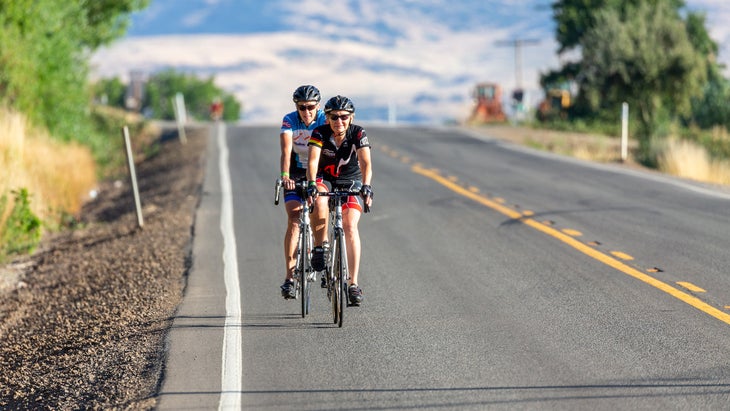
All cyclists get to pedal the 20-mile Bear Creek Greenway that runs north from the edge of town, connecting Ashland with surrounding communities. Fun fact: Ashland is home to the United Bicycle Institute, a school for bike mechanics and builders, that has offered one- and two-week programs since 1981.
Number of Bike Trails: 86 trails
Most Popular Bike Trail on Trailforks: Locals love the two-mile Jabberwocky, which drops almost 1,000 feet of elevation in a series of machine-built berms and tabletops. (Hand-built trails are narrower and often more technical.)
6. Park City, Utah
Population: 8,374
People for Bikes Score: 48
League of American Bicyclists Status: Gold
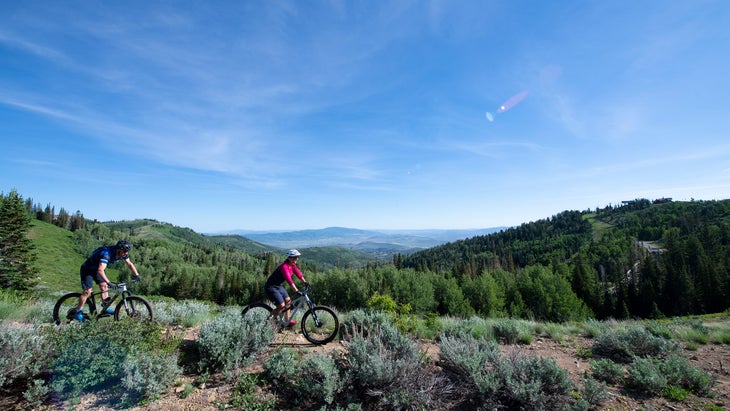
Why I Chose It: Park City’s People for Bikes score isn’t stellar. While at 48 it’s well above the U.S. average, it still doesn’t crack their list of the top 10 small cities due to the city’s lack of bike-safety projects and bike access to core services like grocery stores and hospitals. But its ranking is climbing—up 15 points, from 33, in the last three years—and the town is interlaced by an impressive 40 miles of non-motorized bike paths. Park City also has a share fleet of electric bikes, and the city introduced a reward program that actually pays people to commute during winter.
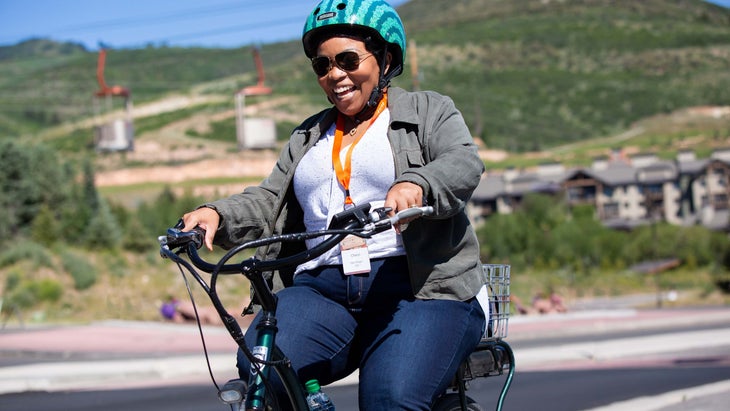
All of that is great, but I chose Park City for this list because of its mountain biking. It is an IMBA Gold-Level Ride Center, with more than 400 miles of singletrack extending directly from town into the Wasatch Mountains. I live in a good city for mountain bikers (Asheville) but am jealous: the amount of dirt you can pedal in Park City is absolutely bonkers: this might be the best town in America to live in if you’re a mountain biker. The only downside is the trails’ seasonality; you’re not riding dirt in the winter, but that’s why they make skis.
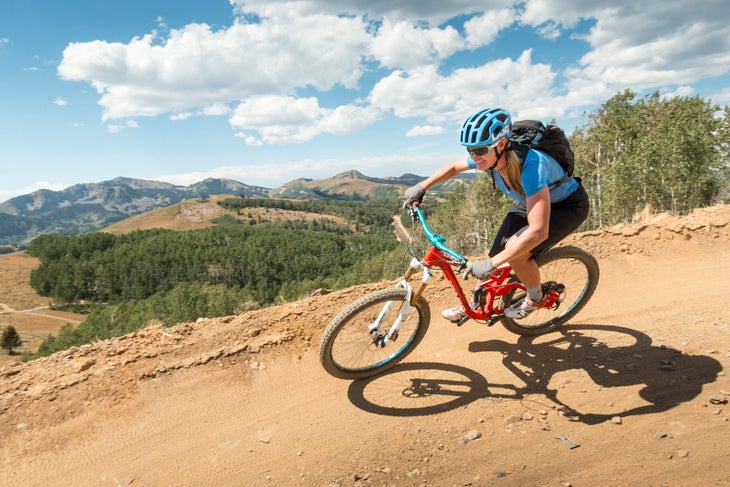
Number of Bike Trails: 629
Most Popular Bike Trail on Trailforks: The Wasatch Crest Trail is a classic mountain-bike ride in Park City, running for 13 miles west of the city with plenty of high-alpine ridgeline singletrack and accompanying big-mountain views. Almost all of the trails are amazing, but locals love The Spine, a short A-line section of the Wasatch Crest Trail, with crazy exposure on a knife-edge ridge.
7. Harbor Springs, Michigan
Population: 1,271
People for Bikes Score: 92
League of American Bicyclists Status: Not Ranked (communities must apply for consideration)
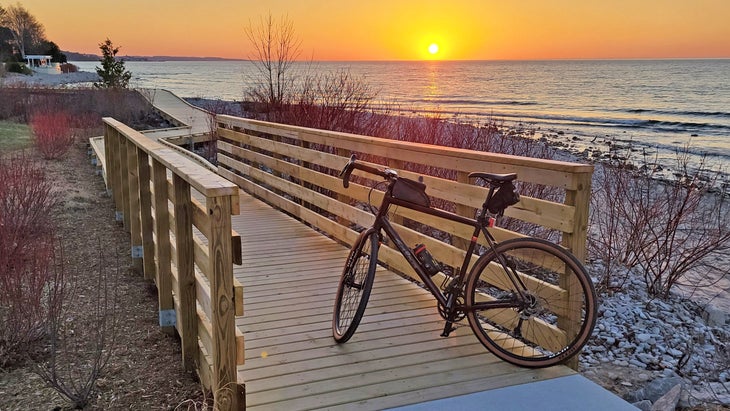
Why I Chose It: Harbor Springs, a small waterfront village on Lake Michigan, earned an outstanding score in People for Bikes’ latest rankings for connectivity: cyclists can pedal everywhere safely, from grocery stores to schools to parks, thanks to low-traffic, low-speed streets (that are pretty flat, too), and the Little Traverse Wheelway, a 26-mile greenway that connects Harbor Springs with several communities and parks along Little Traverse Bay.
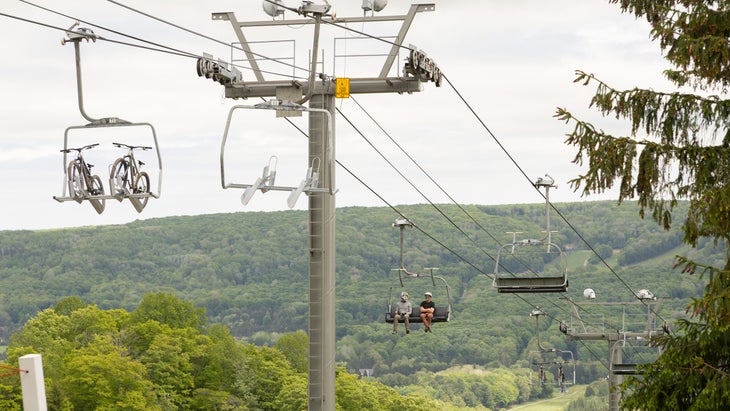
Pedaling isn’t just relegated to in-town cruising, though. The place has a vibrant mountain-biking scene thanks largely to The Highlands, a lift-served bike park with 22 miles of mountain-bike trails. There’s a mix of trails for all levels, while cyclists just looking to cruise will find several miles of wide paths at the Offield Family Nature Reserve and the McCune Nature Preserve.
Number of Bike Trails: 54
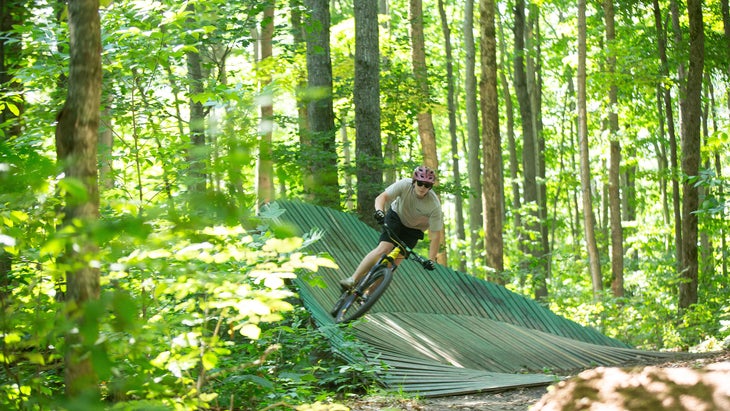
Most Popular Bike Trail on Trailforks: The short Dirt Sample, a double-black downhill trail at the Highlands Bike Park, gets top honors for its bevy of wooden features like jumps, drops, and berms.
8. Provincetown, Massachusetts
Population: 3,664
People for Bikes Score: 96
League of American Bicyclists Status: Silver

Why I Chose It: Provincetown had the second-highest People for Bikes score of any town in the U.S. thanks to its suite of low speed limits, multiple bike paths, a dedication to the commuting cause, and the lack of hills. The secluded island community of Mackinac Island, Michigan, had the only higher score, and while I love the idea of a town that bans cars, I ultimately left the place off this list because of its seclusion and the inherent difficulty of living and working there. (Mackinac only has 500 year-round residents.)
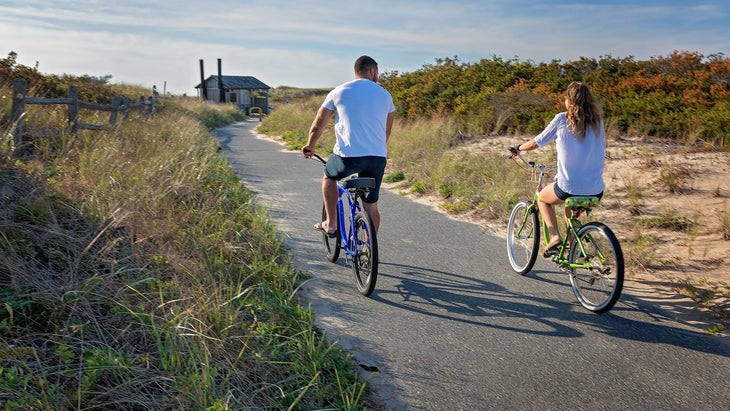
Provincetown has a Bicycle Committee that plans projects and prints an annual map of bike routes. A beach town on the tip of Cape Cod, it was essentially built for single-speed cruising—think pedaling to the ocean and then to get ice cream—and that sort of low-speed, casual cruising remains a fixture of the lifestyle. The year-round population is just over 3,000, and yet Provincetown has five bike shops. A five-mile loop trail traverses the forests and dunes outside of town, with spurs to beaches facing the Atlantic.
Number of Bike Trails: 21
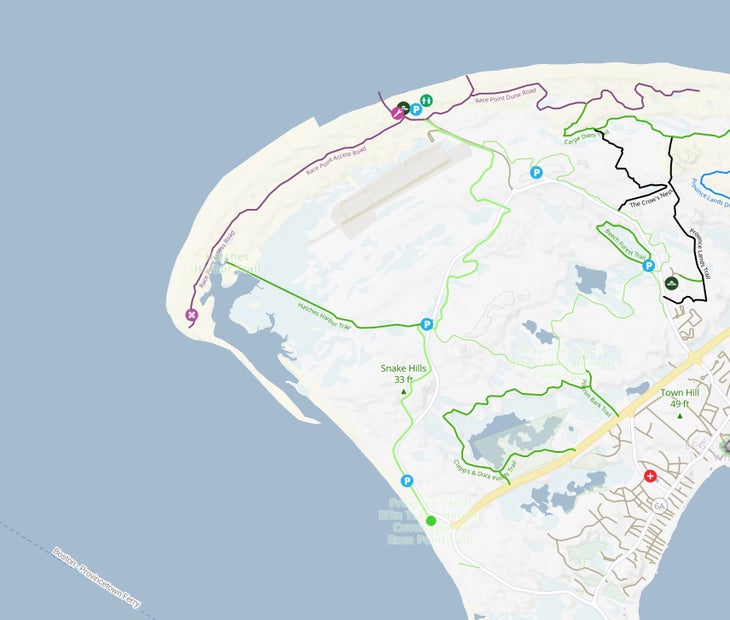
Most Popular Trail on Trailforks: Province Lands Bike Trail is the main attraction with a hilly, paved 5.25 mile loop through sand dunes and beech forest. Check out the 3.5-mile Herring Cove to Race Point Spur, which connects two popular beaches on opposite ends of the Cape.
9. Sewanee, Tennessee
Population: 2,922
People for Bikes Score: 83
League of American Bicyclists Status: None, but the University of the South in town has a Bronze ranking
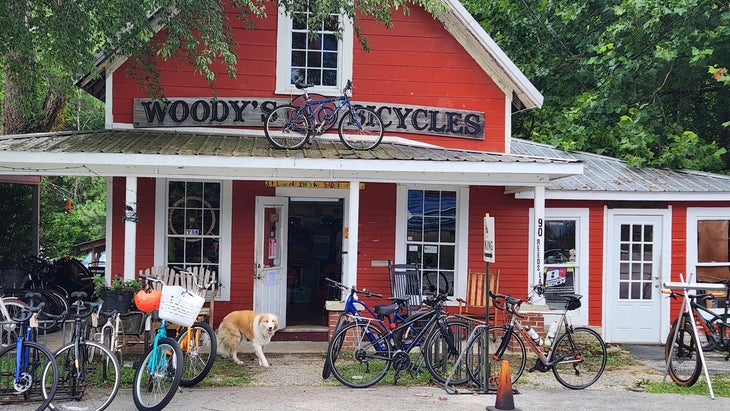
Why I Chose It: Sewanee is a small college town on the top of the Cumberland Plateau in Middle Tennessee with beautiful Collegiate Gothic architecture and stunning fall foliage. Life revolves around the University of the South, and the community in general has the languid pace of a tiny southern mountain town, which, frankly, is ideal for someone riding around. Sewanee is the number-one-ranked Bike Friendly Community in the South, according to People for Bikes, based on the low-traffic streets and bike access to essential destinations like schools, jobs, and grocery stores.
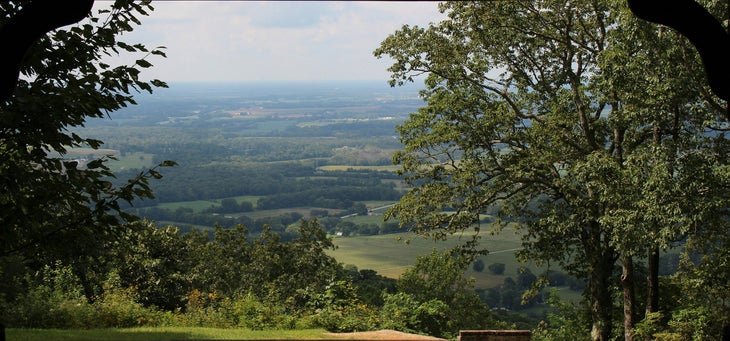
Cyclists could probably live a car-free (or car-light) life, but there’s more here than just going from A to B. The 22-mile Perimeter Loop is a mix of singletrack, double track, and pavement that encircles the university’s campus and provides access to other trails in the area, while the 12-mile Mountain Goat Trail is a paved off-street option that traces an old railway from Sewanee northeast to the town of Monteagle. Road cyclists can create 25-mile-plus loops using the country roads that descend and ascend the 1,000-foot-tall Cumberland Plateau.
Number of Trails: 34
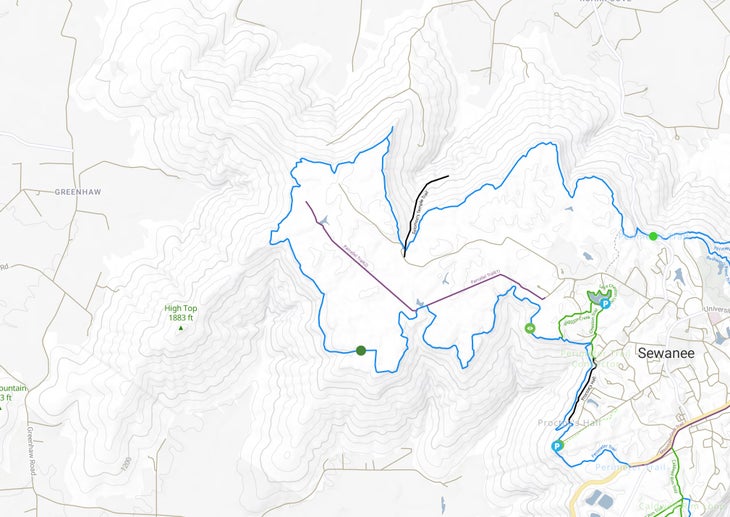
Most Popular Trail on Trailforks: The 14-mile singletrack portion of the Perimeter Trail is the locals’ favorite option thanks to its cross-country flow and mild technical difficulty.
10. Fayetteville, Arkansas
Population: 99,285
People for Bikes Score: 50
League of American Bicyclists Status: Gold
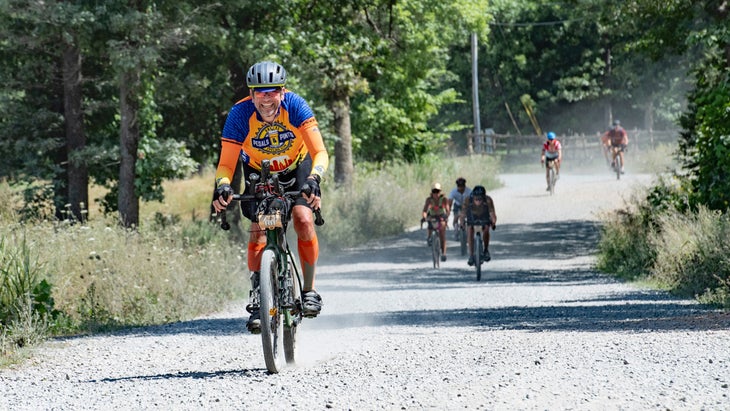
Fayetteville barely made it under our population cap of 100,000, but this southern mountain town is a great sleeper destination for cyclists. It may not get quite the attention of hot towns like Bentonville, but Fayetteville is surrounded by the Ozark Mountains, with 50 miles of singletrack in town and the nearby ridges, not to mention hundreds of miles of gravel roads.
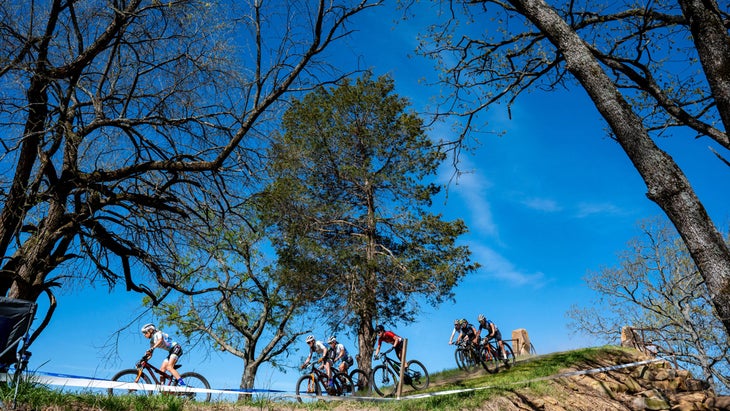
Within the city, cruisers have 50 miles of paved bike trails, and the future is only looking brighter. Fayetteville’s council envisions a community where every resident is within a two-minute pedal of an established trail, and the town is building an average of two to three miles of paved trail every year. Fayetteville is also the beginning of the Razorback Greenway, a 40-mile regional bike path that connects communities throughout Northwestern Arkansas.
Number of Trails: 154
Most Popular Trail on Trailforks: Mountain bikers love Fayetteville Traverse, an intermediate flow trail that connects with two downhill trails, Red Rum and Chunky.
Graham Averill is Outside magazine’s national-parks columnist. He rides his bike everywhere around his hometown of Asheville, North Carolina, even though it has a poor People for Bikes score because of a lack of greenways and bike lanes.
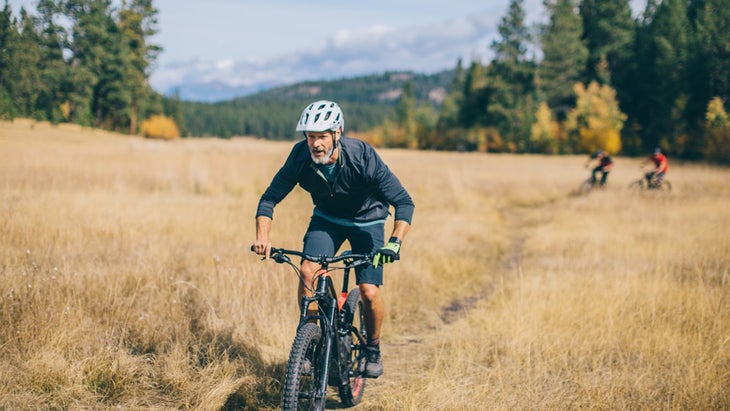
For more by this author, see:
Source link

